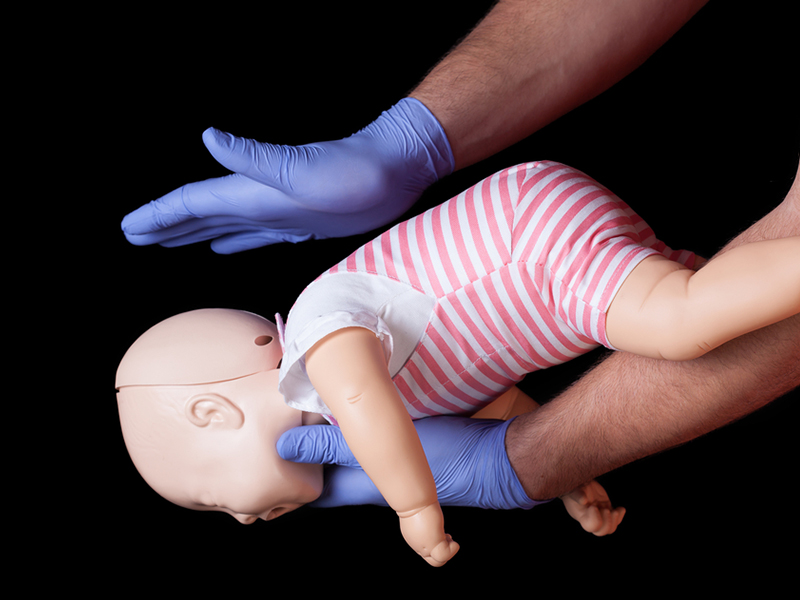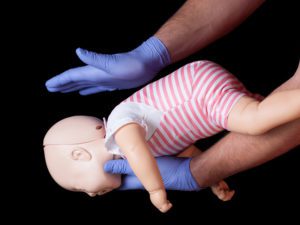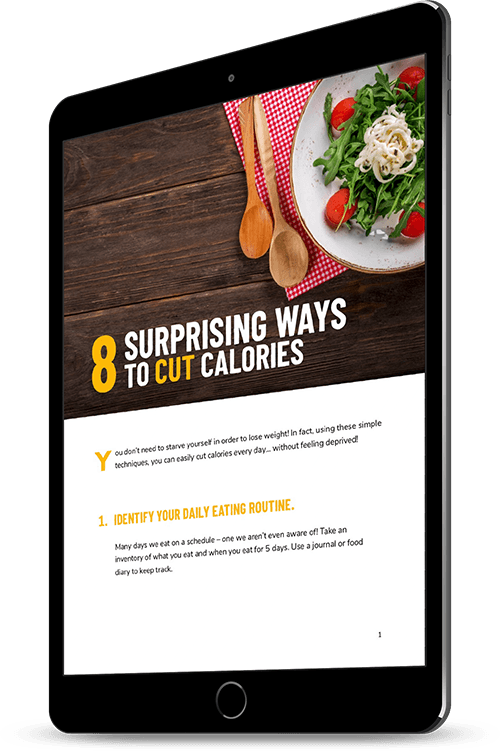A Parent’s Guide to Saving a Choking Child


Choking is a leading cause of injury for children 4 and under, according to the American Academy of Pediatrics. While choking can be serious at any age, children are especially vulnerable because they put things in their mouths, and their small airways can easily become blocked.
First aid for children is also more complicated. Their developing bodies are more prone to injury and require special care, especially for infants.
As a parent, you can reduce the risk of accidents. Learn how to prevent choking and what to do if your child is struggling after swallowing food or any small object.
How to Respond When a Child Is Choking:
1. Take classes. Attending first aid courses will help you to prepare for emergencies. Contact your local chapter of the American Heart Association or Red Cross or ask your employer. Even spending a few minutes watching training videos online can show you how to practice the basic techniques.
2. Ask first. Ensure that your child is really choking. If they’re able to talk and cough, their airway is not completely blocked. Coughing is the natural solution, so let it do its work.
3. Administer back blows. If your child is choking, start with back blows. Hit them between the shoulder blades up to 5 times. You need to be firm enough to dislodge the object, but gentle enough to avoid injury.
4. Use abdominal thrusts. If choking continues, put your arms around your child’s waist with your hands placed together a little above their navel. Press inwards and upwards to help squeeze air out of their lungs.
5. Protect your baby. For children less than 1-year old, abdominal thrusts need to be avoided because they may harm fragile organs. Use chest thrusts instead while holding the infant across your forearm and supporting their head.
6. Call 911. If another adult is nearby or within shouting distance, ask them to call emergency services. If you’re alone, dial 911 yourself if your initial attempts at first aid fail to dislodge the object or your child loses consciousness.
7. Seek medical care. Call your child’s doctor after any episode of choking. You may need to visit the emergency room if they swallow something other than food or if you suspect that any object has entered their lungs.
How to Prevent a Child from Choking:
1. Choose safe foods. Hard candy is the leading cause of choking in children. Take precautions with any food that is sticky or hard and round. Cut food into strips rather than circles.
2. Remove temptations. Read labels to make sure you’re buying age appropriate toys without potentially dangerous small parts. Put bright shiny objects like coins out of reach.
3. Check under furniture. Children live closer to the ground. Look under your couches and beds for stray earrings and toys that a toddler could grab.
4. Switch balloons. Buy balloons made from Mylar. The rubber ones can conform to a child’s airway when ingested.
5. Eat sitting down. Keep mealtimes calm and quiet. Teach your child to take small bites and chew their food thoroughly. Discourage them from playing with their food or talking with their mouth full.
6. Enlist older siblings. Close supervision is important but difficult to do, so let older brothers and sisters pitch in. Train them in first aid and explain why their toys might not be safe for younger children.
Regardless of what you’ve seen on TV, avoid turning a child upside down or reaching into their throat unless you can easily see and remove the object they swallowed. Creating a safe environment and knowing basic first aid will help you to keep your child safe from choking.
CLICK HERE to Explore/ Our Free Online Courses


Responses